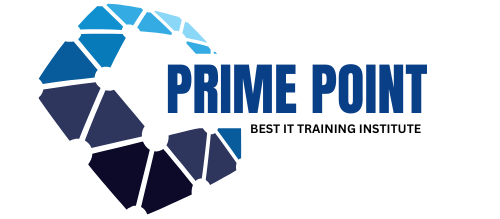
Generative AI as a Canvas Companion
Generative AI has slid into the artist’s world like a shadow that doesn’t just follow but hands you a brush when you’re stuck. It’s this restless thing, churning out sketches, tunes, or designs faster than you can blink, not to steal the show but to nudge you into new corners of your own head. Painters, musicians, poets—they’re all finding it’s less a rival and more a wingman, one that doesn’t care about sleep or deadlines. It’s messy, it’s wild, and it’s turning studios into playgrounds where the human spark still calls the shots but gets a hell of a boost.
The way it fits in is odd but natural. You throw it a scrap—say, a half-baked melody or a doodle on a napkin—and it runs with it, tossing back something you didn’t expect. It’s not copying; it’s riffing, pulling from everything it’s seen, heard, or swallowed. A painter might say, “Give me a forest at dusk,” and it’ll spit out a canvas—twisted trees, purple light, maybe a deer no one asked for. It’s rough sometimes, too flat or too weird, but there’s a seed there, something to grab and twist into your own. It’s like a friend who’s always got a crazy idea, and you decide how far to take it.
Painters are hooked already. Some guy in Brooklyn told me he uses it to break slumps—types in a prompt when the brush won’t move, gets a flood of images, then picks one to rip apart with his own oils. It’s not the final piece; it’s the shove he needs. Others crank out whole galleries this way, letting it sketch the bones and layering their soul on top. The speed’s unreal—a week’s work in an hour—but it’s the jumping-off point that hooks them. They’re not outsourcing art; they’re fishing for sparks in a sea they’d never swim alone.
Music’s where it gets loose. Feed it a chord or a beat, and it’ll hum back a song—maybe a piano lament or a glitchy rave track. A guitarist I know uses it to jam, tossing in a riff and getting a bassline that snarls back. He’ll keep the vibe, ditch the fluff, and suddenly he’s got a gig-ready tune. It’s not about replacing the band; it’s about filling the room when inspiration’s thin. Some let it run wild—whole albums born from prompts, eerie and sharp. Critics scoff it’s got no heart, but when it lands a hook that sticks, the crowd doesn’t care who started it.
Designers lean in too. A furniture maker might ask for a chair—sleek, weird, whatever—and it’ll churn out fifty takes, some clunky, some gold. She’ll nab one, tweak the angles, and build it real. Fashion’s the same—dresses dreamed up from a vibe, not a sketchbook, then stitched by hand. It’s a shortcut, sure, but it’s also a muse that doesn’t sulk when you ignore it. The pros love the churn—ideas they’d never stumble into, handed over like a dare. They take it, break it, make it theirs.
The spark’s in the back-and-forth. It’s not a boss; it’s a conspirator. A poet might type a line—“the moon forgets its name”—and it’ll spin a verse, clumsy but bold. She’ll steal a phrase, ditch the rest, and suddenly the page is alive. It’s a dance—one stumbles, the other catches, and the rhythm builds. I saw a sculptor use it to mock up a figure in clay; the AI’s version was stiff, but it sparked a curve he carved into something fierce. It’s not the art—it’s the shove, the rough draft that gets you moving.
The grumble comes quick, though. Purists hate it—say it’s cheating, that art’s about sweat and scars, not a bot’s blank stare. Fair point: it’s never cried over a blank canvas or bled for a note. Sometimes it’s too clean, missing the tremble of a human hand. Galleries are filling with machine-spun stuff, and it stings to see it priced like the real deal. But the flip’s true too—it’s a tool, not a thief. A chisel doesn’t carve the statue; the sculptor does. This just hands you more chisels, faster.
Ethics snag it up, of course. It’s gorged on every painting, song, and poem it can find—whose work got chewed up to make it tick? Artists fume when it mimics their style, like a ghost stole their palette. Lawsuits are piling—did it swipe that swirl from Van Gogh or that riff from Billie? And if it’s trained on big names, the little guy’s voice gets drowned. It’s not evil; it’s hungry, and we’re the ones tossing it the feast. Fixing that’s a slog—whose art counts, who gets paid?
Still, the lift is real. A kid with no training can type “storm over a castle” and get a painting to call her own, tweak it, show it off. It’s not elite anymore—art’s cracking open, loud and sloppy. Pros use it to dodge the grind, churning concepts while they sip coffee, not sweat deadlines. A muralist in LA said it cut his prep from weeks to days, leaving room to actually paint. It’s not replacing; it’s amplifying, handing time and ideas to folks who’d otherwise stall.
Where it’s going is a toss-up. Could flood the world with half-baked beauty, drowning the slow stuff, or it might push us weirder, bolder—art we’d never chase solo. Imagine galleries where every piece is a human-machine mashup, or songs that shift every listen. It’s on us—wield it lazy, and it’s noise; wield it sharp, and it’s fire. For now, it’s a sidekick, restless and ready, tossing fuel on our flames. We light it, we shape it, and it’s burning bright.










